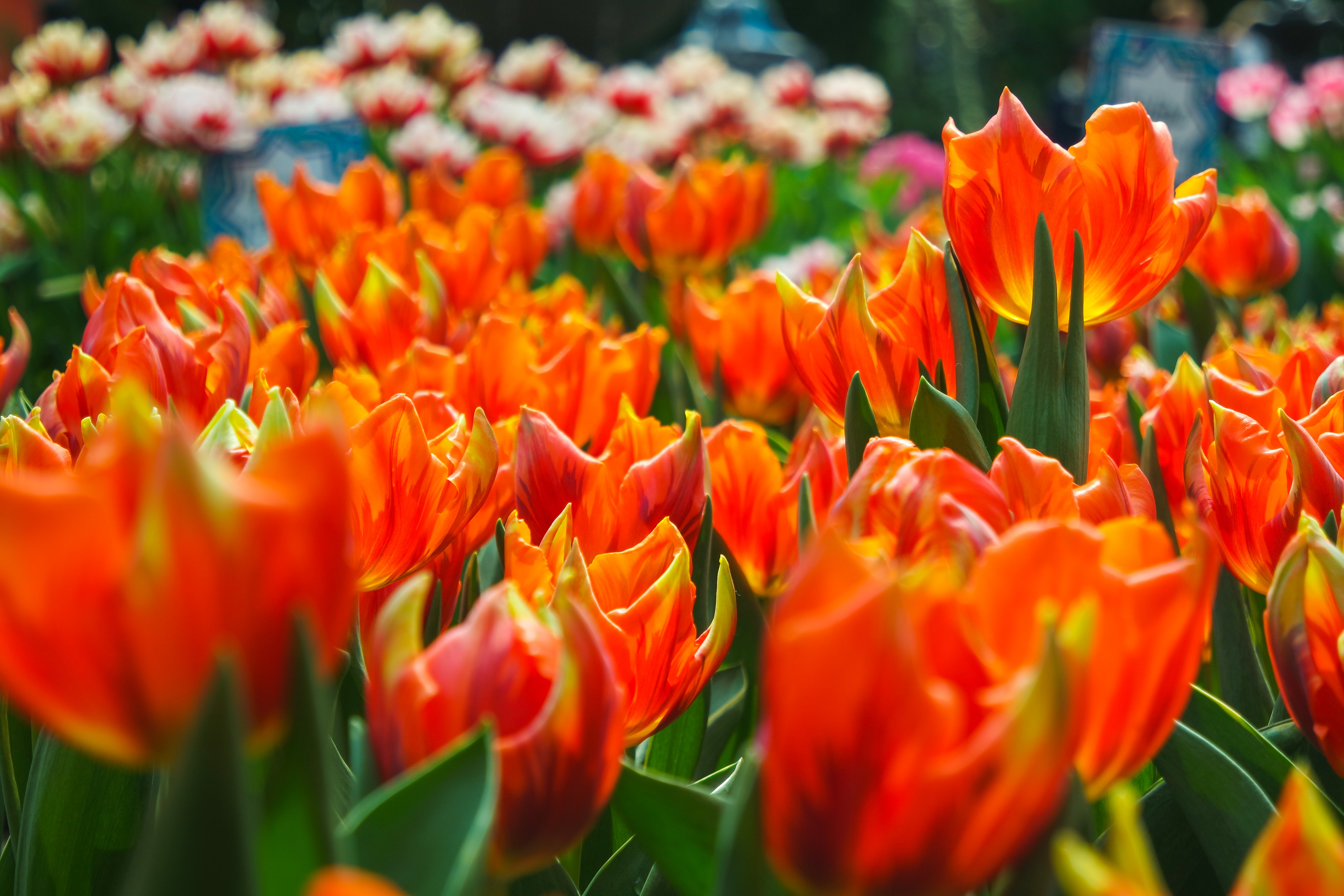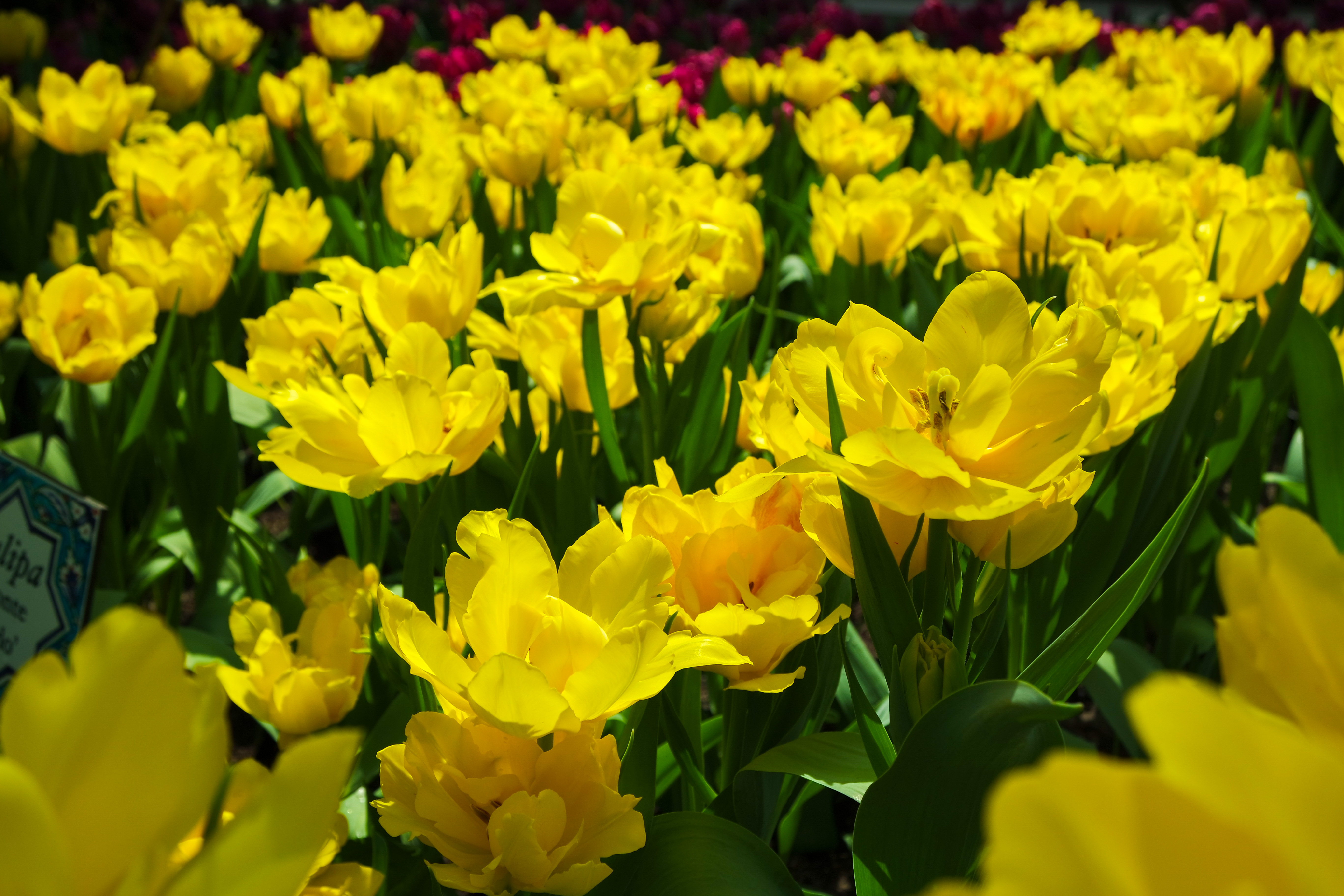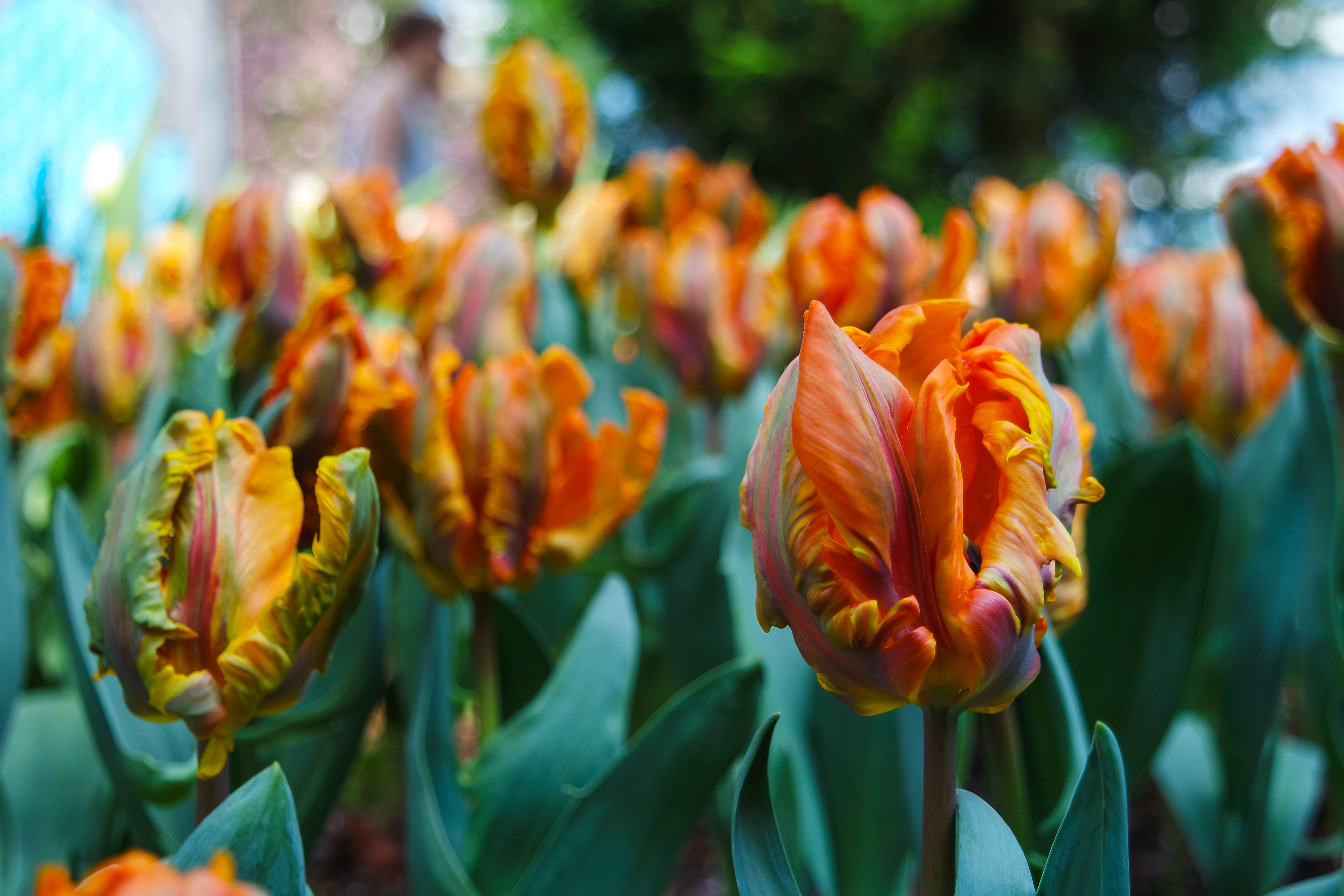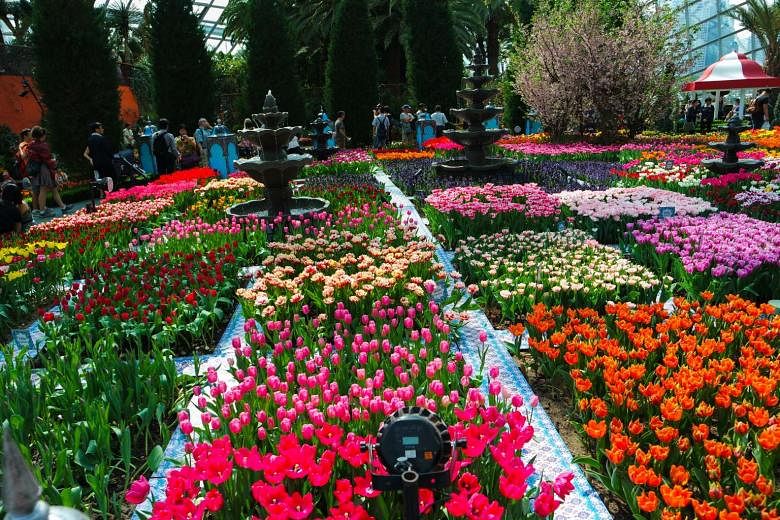SINGAPORE - Tulips are blooming at Gardens by the Bay.
The Tulipmania floral display opened on Friday (April 8) and will run until May 22. Held at the Flower Dome, visitors can see the tulips from 9am to 9pm.
All the tulips are flown in from the Netherlands.
These flowers are delicate, and they can last up to eight to 12 days after blooming.
This year's edition is the fourth and will feature altogether 110,000 tulips, with 60 varieties. A highlight is the Lily Tulip variety, a new addition to the exhibition.
Here are some interesting things to know about Tulipmania.
1. Tulip history
Although tulips are synonymous with the Netherlands, they actually originated in Central Asia. Early nomads then brought the bulbs to the Ottoman Empire. A tulip looks like a turban, which is called "tulbend" in Turkish, hence the name.
The Ottoman Empire adored the flower. It was a symbol of life and fertility, and is featured widely in paintings, songs and poems.
Tulips came to Netherlands sometime in the 16th century when Sultan Suleiman gave a few bulbs to the Austrian ambassador Gisleeb van Busbeke as a present for King Charles V, the Holy Roman emperor.
Carolus Clusius, a famous Dutch botanist, took the bulbs from the Royal Austrian Gardens in 1593 .
The first blooms appeared in the Hortus Botanicus, a botanical garden in Amsterdam.
Tulips were seen as precious because of their rarity and exotic history. The most expensive cultivar, the Semper Augustus, sold for 10,000 Dutch guilder in 1633.
The flower was worth as much as a grand house in Amsterdam, or half a lifetime's supply of food for an entire family.
2. Tulip traits
Tulips come in almost every colour, with different meanings for the hues.
For example, red tulips symbolise true love, pink ones convey affection, while purple blooms signify royalty and wealth.
Tulips grow up to 2.5cm more after they are cut. Most tulips range from 15 to 70cm.
Some tulips are fragrant. Sweet-smelling tulips include the Tulipa Monte Carlo and spicy-smelling ones include the Tulipa Princess Irene.
According to the Royal Horticultural Society, seeds should be planted in autumn, as they need a period of frost to germinate. Flowers will appear after four to seven years. All tulips naturally bloom in spring.
3. Lily Tulips
The Lily Tulip has long petals that point outwards.
It has less foliage than other types, so its flowers are smaller. The flower resembles old tulip species once grown in Central Asia.
Three interesting Lily Tulip cultivars are the Tulipa Fire Wings, Tulipa Claudia, Tulipa Pretty Woman.
The Tulipa Fire Wing has flowers with a red centre and yellow edges. This gives it the appearance of flames.
The Tulipa Claudia's flowers are purple, with white edges and pointed petals.

The Tulipa Pretty Woman has bright red and pointed flowers.

4. Triumph Tulips
The most common type of tulip is the Triumph Tulip, bred by crossing late and early blooming tulips. The flower has a sturdy stem that allows it to stand tall, even in bad weather. They have longer vase lives than other cultivars, so they are suitable as cut flowers.
The Tulipa Arjuna, a Triumph Tulip, is bright red in colour, with small streaks of purple and green. It has no scent.

5. Fringed Tulips
The Fringed Tulip gets its name from its frayed edges.
The frayed edges are caused by genetic mutations. The fringes may or may not be the same colour as the rest of the flower.
Two cultivars to look out for are the Tulipa Cuban Night and the Tulipa Oviedo.
Tulipa Cuban Night has purplish-black flowers. The fringes are the same colour as the flower. It derives its name from being a hybrid of the Tulipa Queen of Night, a black tulip.

The Tulipa Oviedo, named after a town in northern Spain, is light purple with white fringes.
6. Double-petal Tulip
Most tulips have six petals. The number of petals of double-petal tulips differ.
Some are called peony-flowered tulips, because their full head of petals resemble peonies. The flowers last longer than other tulips because they have more petals.
The Tulipa Monte Carlo is bright yellow and some have red streaks. Its flowers have a fragrance.

7. Parrot Tulip
The Parrot Tulip has curled and fringed petals, also a result of genetic mutation. The flower gets its name from its petals which resemble parrot feathers. Most of the tulips have vibrant colours and many are multi-coloured. They have large flowers, so they are more resistant to storms .
The Irene Parrot is a hybrid of the Princess Irene Tulip. The original tulip was named after Princess Irene of the Netherlands in 1949. The Irene Parrot Tulip is orange, with reddish-purple streaks.

If you are planning to check out Tulipmania, admission prices for local residents are $12 for adults and $8 for senior citizens and children, for one conservatory. Local senior citizens enjoy 50 per cent off admission tickets to the Flower Dome for the duration of Tulipmania. For both conservatories, adults pay $20, children $12 and senior citizens $15.
For non-local residents, the tickets cost $28 (adults/senior citizens) and $15 (children) for both conservatories.
You can also join the Tulipmania ASK me! tours conducted by Gardens by the Bay staff and volunteers, who will share more information about the floral display.
Book tickets at http://www.gardensbythebay.com.sg/
For a more leisurely experience, go on a weekday, as the domes get more crowded on weekends.
Sources: Gardens by the Bay, Amsterdam Tulip Museum, Royal Horticultural Society




